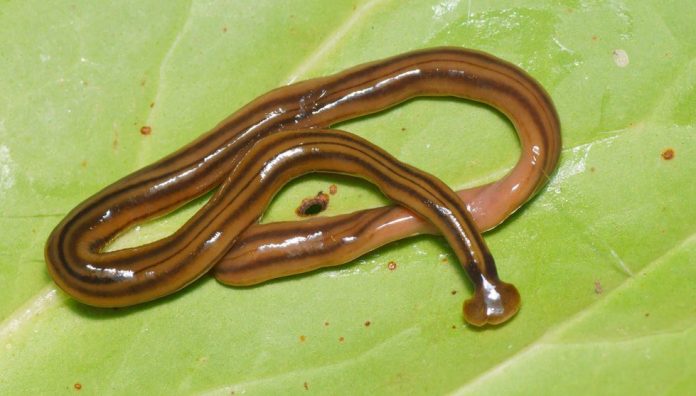Scientists Discover Giant Worms Invaded France Almost 20 Years Ago.
The menace from these worms, also called bipaliines, is so great, biologists from the French National Museum of Natural History say everything from wildlife to gardens are at stake.
The research team just published the results of a five-year study on predator worms, compiling sightings not only from France, but tropical territories like Guadeloupe and Martinique.
In all, biologists identified five species of alien worms, including the distinctive hammerhead variety.
“At the beginning of our study, we were intrigued by the almost total absence of published information about the presence of bipaliines in France,” the researchers wrote.
But here’s the catch: The critters have been in France — gobbling up earthworms, wreaking havoc on local wildlife and scaring the bejesus out of unsuspecting gardeners — for at least the last 20 years.
And no one thought to sound the alarm.
“We were amazed that these long and brightly coloured worms could escape the attention of scientists and authorities in a European developed country for such a long time,” the study notes.
It’s even more surprising considering the invader’s utter lack of subtlety. At 10 inches long, the hammerhead worm is considered the world’s biggest flatworm. When fully elongated, like when it glides through the soil, it can reach more than three feet in length.
Not only that, but some species are conspicuously colored bright blue-green. And others, like the hammerhead worm, very obviously live up their name.
Did we mention the giant flatworms are armed with a bioweapon called tetrodotoxin, allowing it to immobilize prey and ensure a horrifyingly smooth digestion?
At least one person did try to warn France back in 2013. That’s when naturalist Pierre Gros snapped an image of the hammerhead worm in his garden.
“This photograph was sent from email to email to email and finally it came to me,” Jean-Lou Justine, the biologist who led the recent study, told The Independent.
But even Justine initially dismissed the worm as a relatively random foreign visitor.
“I looked at it and said ‘Well, this is not possible – we don’t have this kind of animal in France’,” he explained to the newspaper.
But Justine eventually came around to the threat, launching a study that would gather citizen sightings from as far back as 1999.
Some of those sighting were squirm-worthy, to say the least. Like kindergarten students stumbling upon what they thought were snakes weaving through the grass. Or a cat with a hammerhead worm stuck in his fur.
Only one official record, published in 2005, noted the presence of the giant worms. But, the research team notes, “since it was published in a rather obscure mycological journal, it certainly did not receive national nor international attention.”
Justine’s team soon realized this wasn’t so much an invertebrate invasion as a fully established occupation — and the scientific community had been caught flat-footed.
The hammerheads, along with four other worm species, were found just about everywhere in France, while species like the New Guinea flatworm had long established themselves far from their native habitat in Asia.
While the ecological impact of these voracious worms has yet to be determined, their taste for earthworms makes them a likely threat to soil ecology, as well as biodiversity.
It is, of course, not the giant worm’s fault for eating what it eats. The real villain here, the researchers suggest, may lie in globalization, which has allowed these tentacles to hitch rides on imported goods — and boldly wriggle where no worm has wriggled before.















